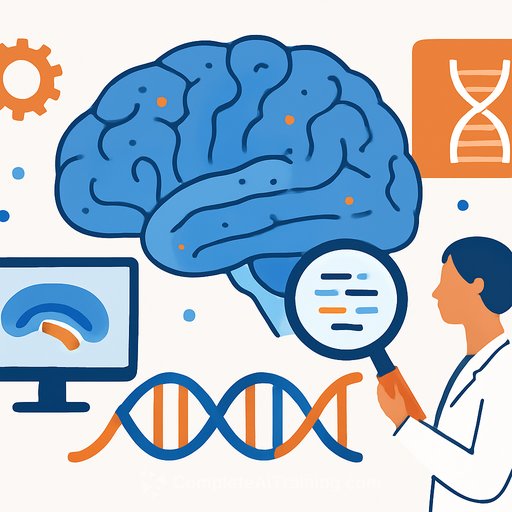AI maps the brain's largest communication bridge and its genetic drivers
Researchers at the Mark and Mary Stevens Neuroimaging and Informatics Institute (Stevens INI), Keck School of Medicine of USC, have mapped the genetic architecture of the corpus callosum-the thick fiber bundle connecting the brain's hemispheres. Using an AI-based tool on MRI scans and genetics from more than 50,000 people, the team identified genetic regions that influence the structure of this vital pathway.
The work, published in Nature Communications, gives researchers a clearer view of how genes relate to brain wiring across the lifespan. It also points to links with mental health and neurological conditions long associated with differences in the corpus callosum.
Why this matters
- The corpus callosum supports coordinated movement, sensory integration, and higher-order cognition.
- Variations in its size and shape have been tied to ADHD, bipolar disorder, and Parkinson's disease.
- Clarifying its genetic basis helps connect molecular biology with observed brain differences in clinical cohorts.
Key takeaways
- New AI-based software detects and measures the corpus callosum and its subregions across diverse MRI types-at scale and with consistency.
- Dozens of genetic regions influence its area and thickness, and these traits have partly distinct genetic drivers.
- Several implicated genes are active prenatally and relate to cell growth, programmed cell death, and interhemispheric axon wiring.
- There is genetic overlap with the cerebral cortex and with conditions such as ADHD and bipolar disorder.
Methods in brief
The team trained an AI tool to locate and quantify the corpus callosum on brain MRI, then applied it to scans and genetic data spanning childhood through late adulthood. Automated measurements enabled high-powered analyses that would have taken years with manual tracing.
By linking imaging-derived traits to genetic variants, the researchers mapped how specific loci relate to corpus callosum area and thickness, including differences across subregions.
What the data suggest
- Area and thickness are influenced by different sets of genes, reflecting distinct biological processes and age-related trajectories.
- Prenatal gene activity is prominent, consistent with roles in early brain wiring and tissue patterning.
- Shared genetics with cortical features, ADHD, and bipolar disorder supports theories that disruptions in interhemispheric connectivity contribute to risk.
Practical value for researchers
- Deploy the tool to accelerate segmentation and quantification of the corpus callosum in existing MRI cohorts.
- Use area and thickness as complementary traits in imaging-genetics analyses and as candidate endophenotypes in psychiatric and neurological studies.
- Incorporate measurements into longitudinal models to examine developmental and aging trajectories with genetic context.
Tool availability
The AI software developed at Stevens INI is publicly available for research use. It automates corpus callosum identification and measurement, enabling orders-of-magnitude gains in throughput for large MRI datasets.
Read the paper and related resources
- Journal article: Nature Communications (DOI)
- Cohort reference: Adolescent Brain Cognitive Development (ABCD) Study
Citation
Article title: The Genetic Architecture of the Human Corpus Callosum and its Subregions. Journal: Nature Communications. Publication date: 4-Nov-2025.
Authors and support
Authors include Ravi R. Bhatt, Shruti P. Gadewar, Neda Jahanshad, Ankush Shetty, Iyad Ba Gari, Elizabeth Haddad, Shayan Javid, Abhinaav Ramesh, Elnaz Nourollahimoghadam, Alyssa H. Zhu, Christiaan de Leeuw, Paul M. Thompson, and Sarah E. Medland.
Support: National Institutes of Health (R01 MH134004, R01 AG059874, R01 MH126213, R01 NS105746, S10OD032285), National Science Foundation Graduate Research Fellowship Program (2020290241), ABCD Study, and UK Biobank (Resource Application No. 11559). NHMRC grants APP1172917 and APP1158127 provided additional support.
Want to build your AI workflow skills?
For those integrating AI into research pipelines, explore role-focused options here: AI courses by job.
Your membership also unlocks:






